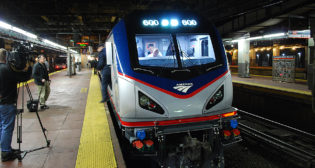
New York MTA Tackling Track Intrusion
Written by Marybeth Luczak, Executive Editor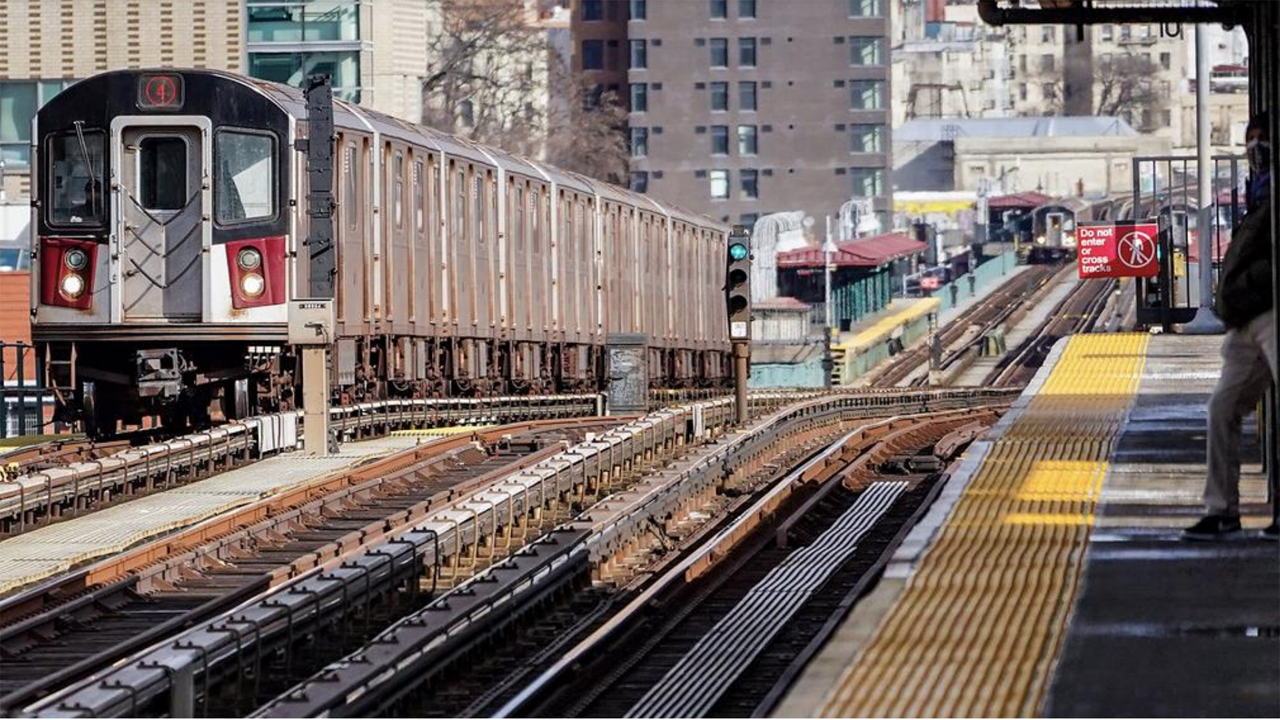
New York MTA late last year launched a Track Trespassing Task Force to study ways to reduce track intrusions, which increased by 20% between 2019 and 2021 across its subway and commuter rail systems, resulting in 68 fatalities in 2021.
Platform screen doors and track intrusion detection technology will be pilot tested on New York City subways as part of a multi-pronged safety initiative that was announced at the Metropolitan Transportation Authority’s (MTA) Feb. 24 Board meeting.
On Dec. 10, 2021, MTA launched a Track Trespassing Task Force to study ways to reduce track intrusions, which the authority said increased by 20% between 2019 and 2021 across the MTA New York City Transit (NYCT) subway and MTA Metro-North Railroad and MTA Long Island Rail Road commuter rail systems. This resulted in 68 fatalities last year.
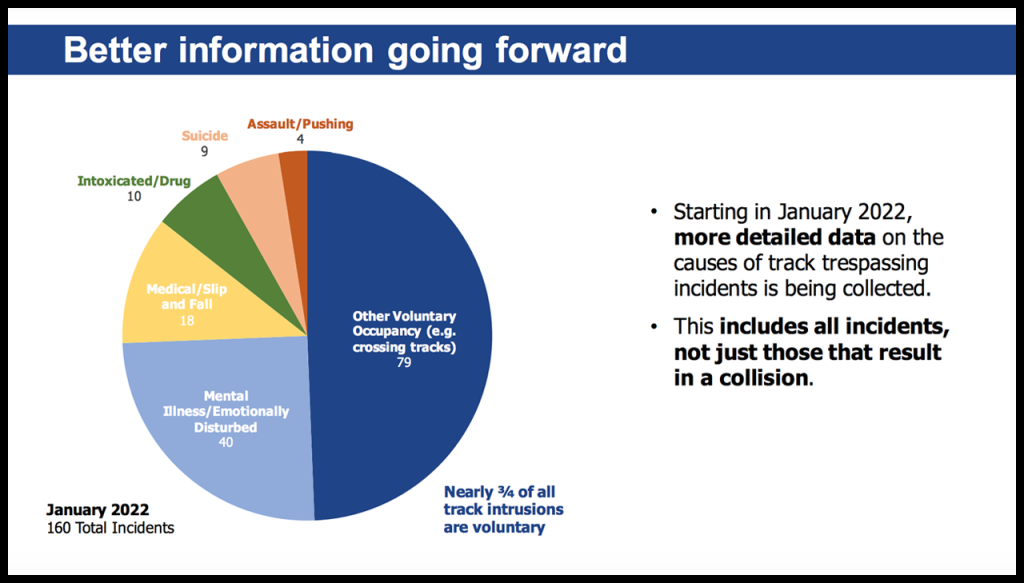
The task force released its findings to the Board, recommending the following capital improvement, operations and customer communications measures:
• Capital Improvements. The task force recommended a Platform Screen Doors pilot program at three subway stations. Representing a mix of platform configurations that serve a high volume of riders, the stations are: Times Square (on the 7 line), 3rd. Avenue (on the L line), and Sutphin Boulevard-Archer Avenue-JFK Airport.
(MTA Chair and CEO Janno Lieber first announced the pilot during a Feb. 23 radio interview. Pat Kiernan of Spectrum News NY1’s morning program asked about the possibility of adding platform doors to protect riders, following the death of a 40-year-old woman last month who was pushed onto the tracks.)
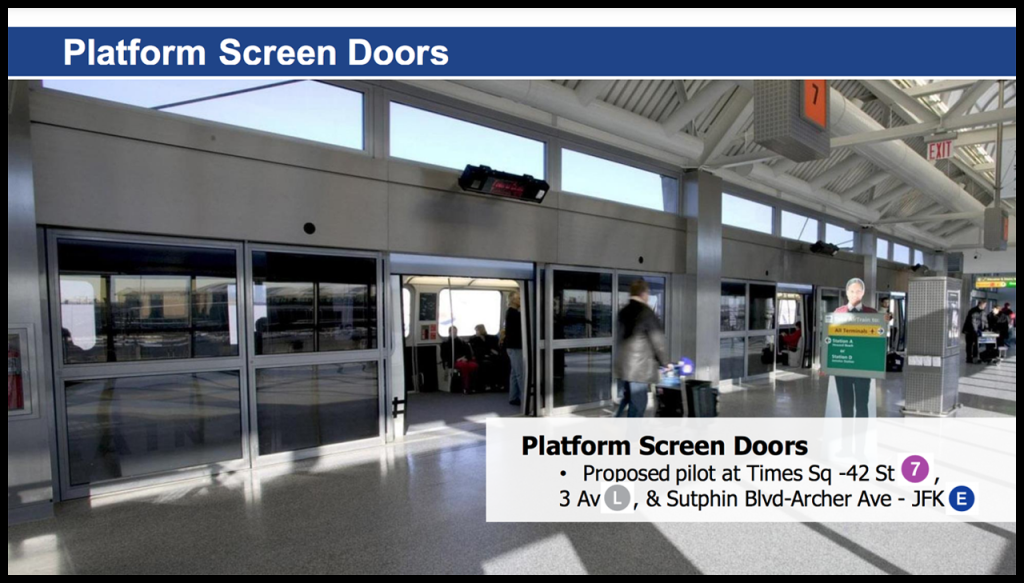
MTA said that it released last month a platform screen doors feasibility study, which STV completed in 2019 and summarized in 2020. Due to constraints, including railcar door misalignments, it found that only 41 of all 472 subway stations—approximately 8% of the system—could be retrofitted with platform screen doors today. The NYCT subway features rapid transit cars with three door alignment profiles on the A Division—also known as the IRT Division, which comprises the numbered lines and the 42nd Street Shuttle—and three on the B Division—the lettered lines plus the Franklin Avenue and Rockaway Park shuttles. Another 87 stations could be retrofitted after NYCT completes by 2033 the procurement of new rolling stock for both divisions, with nearly identical car geometries/door spacing.
The task force also recommended a Track Intrusion Detection Systems pilot to alert train operators when people or objects enter the track area. As well, MTA said it would look to expand the use of laser intrusion detection systems to secure critical subway tunnels.
For Long Island Rail Road and Metro-North, the task force recommended securing end-of-platform areas and railroad rights-of-way by adding and repairing fencing and signage. In addition, live video from forward-facing cameras would provide another way to warn operators of obstructions, according to MTA.
• Operations. MTA said it will work with state and city partners “to enhance mental health outreach and platform safety. In collaboration with New York State Office of Mental Health Services’ Safety Options Support (SOS) teams, there will be a more targeted approach to clear encampments within the system, helping to prevent people from entering the tracks. Additional NYPD deployments announced as part of the Subway Safety Plan will address circumstances that may lead to riders on the tracks, and the MTA has identified priority stations where intrusions are most prevalent to the NYPD, so officers can be surged to those platforms.”
MTA said it will add video analytics to its existing platform CCTV camera system to monitor for dangerous behavior at stations and improve incident response. Additionally, it will explore installing front-facing cameras on subway trains for real-time monitoring. The authority is working with Transit Tech Lab to assess front-facing camera effectiveness, with results due this spring.
• Customer communications. MTA reported that it will create a video messaging campaign to warn riders of the dangers of being on the tracks and educate them on the importance of not standing close to the platform edge. Additionally, it will partner with local and national experts, including those at NYU’s Department of Psychiatry, to improve suicide prevention messaging and help deter voluntary track intrusions.
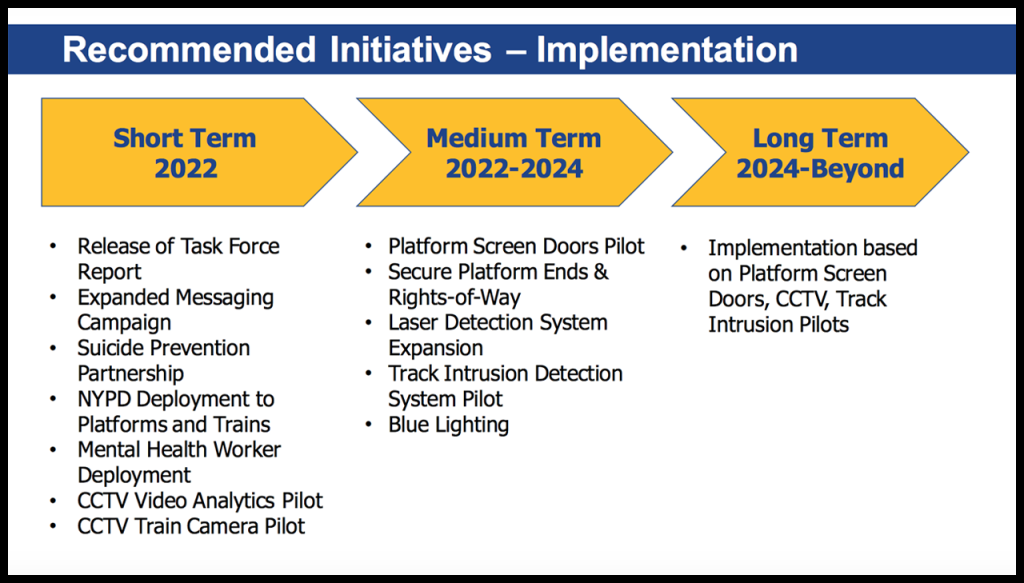
The initiatives presented to the Board “will build on the authority’s ongoing efforts, which include messaging campaigns, in-station Help Points, platform edge warning strips, and Laser Intrusion Detection Systems,” according to MTA.
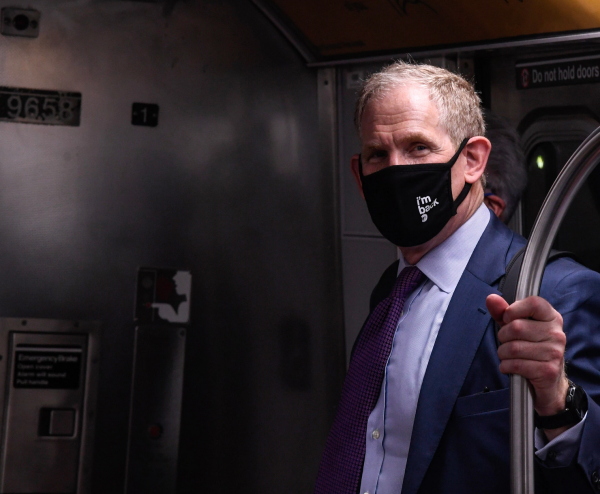
“The MTA wants to deal with this problem of track intrusions in all of its complexity,” Janno Lieber said. “It’s not just the violent assault we saw last month, which was a horrific version of this problem, but also everyday incidents of people retrieving cell phones or trying to cross between platforms. It’s a huge risk to safety and the day-to-day operation of the system. We began looking at this issue last fall and have come up with a number of proactive strategies that are moving forward.”
“The task force looked comprehensively at the problem of track intrusion and identified practical solutions involving improved customer communications, security and outreach, and innovative technology solutions,” said MTA Construction and Development President Jamie Torres-Springer, who also leads the Track Trespassing Task Force. “Our recommendations will educate riders about the risks of getting on the tracks, prevent intrusions, and reduce injuries and fatalities.”

